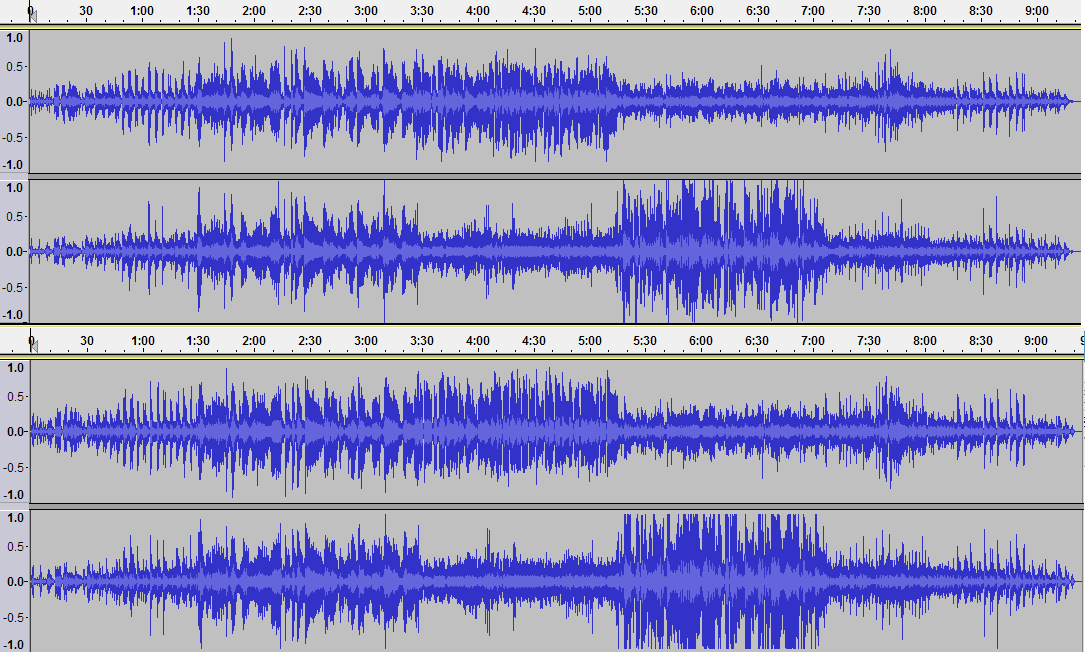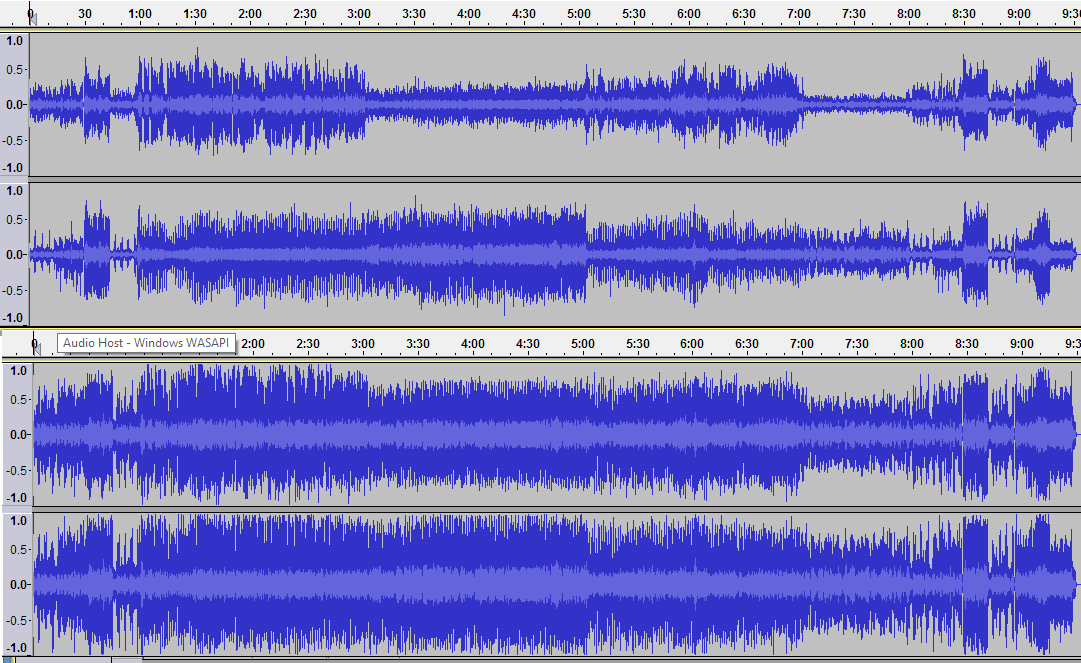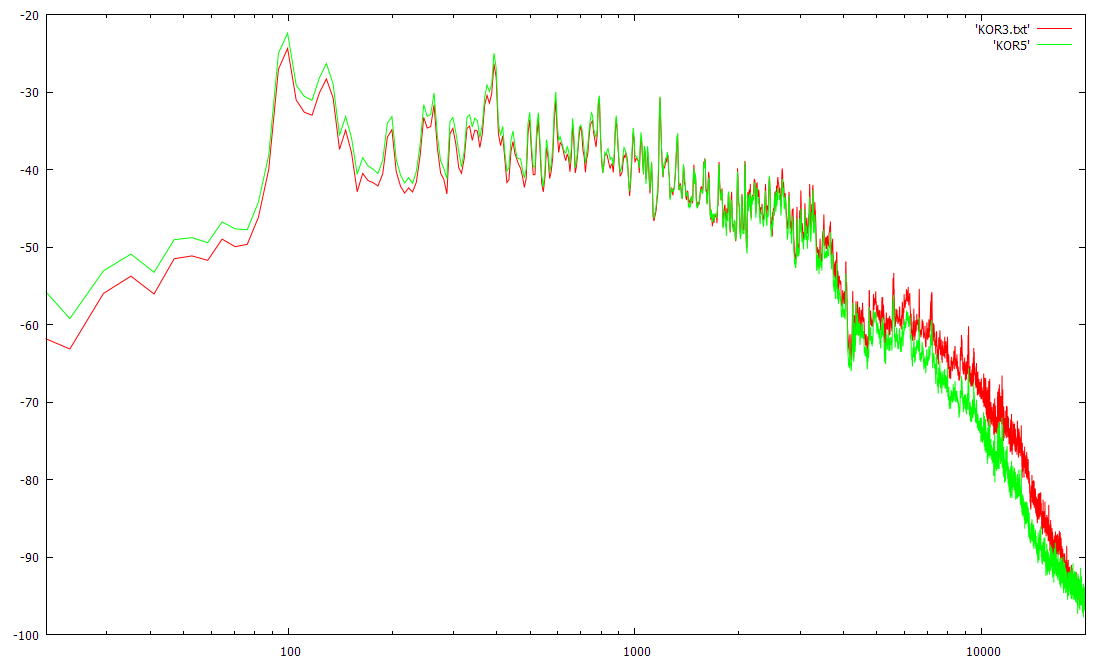Back to Kind of Blue. This is the latest HD Tracks 24/192 download in mono, and then the stereo version, said to be the best sounding versions yet, particularly the mono version. The stereo one looks remarkably similar to my Japanese CD. Neither version has the ridiculously high peaks that previous Columbia versions showed, or the massive differences between channels in the stereo version.
FWIW, quoted from the HD Tracks website:
Kind of Blue Becomes Digital, by Engineer Mark Wilder
"Since the Kind of Blue mixed masters are multiple generations from the original (due to excessive play/wear), we decided to go directly to the original session reels. Not only does this put us at the original session as a starting point, but it also allows us to deal with the pitch issue as well.
The three, 3-track half-inch tapes are in good condition, but age has force them to scallop a little, meaning that the edges curl away from the tape head. This changed the initial focus from mixing from the originals to archiving them before mixing and working from the archive files. This allowed us to gently guide the tape against the playback head to get optimal contact and fidelity.
The archiving was done at 192kHz/24 bits, played from a modified Ampex ATR 104, and hard-wired to HDCD Model 2s directly patched to a Lynx 2 sound card.
An upside to working from the archive files was the ability to chase the original fader moves done during the mix in 1959. We constantly compared to an early pressing - mono and stereo - and worked bar by bar to duplicate the level moves on the three tracks to match as well as possible.
Each channel was converted to analog and passed through a GML mixer, bussed to stereo or mono - depending on the release format - and converted once again to 192Kc/24 bits. At the GML, we inserted processing where needed.
Mark Wilder, Battery Studios
Mono
[/URL][/IMG]
Stereo









